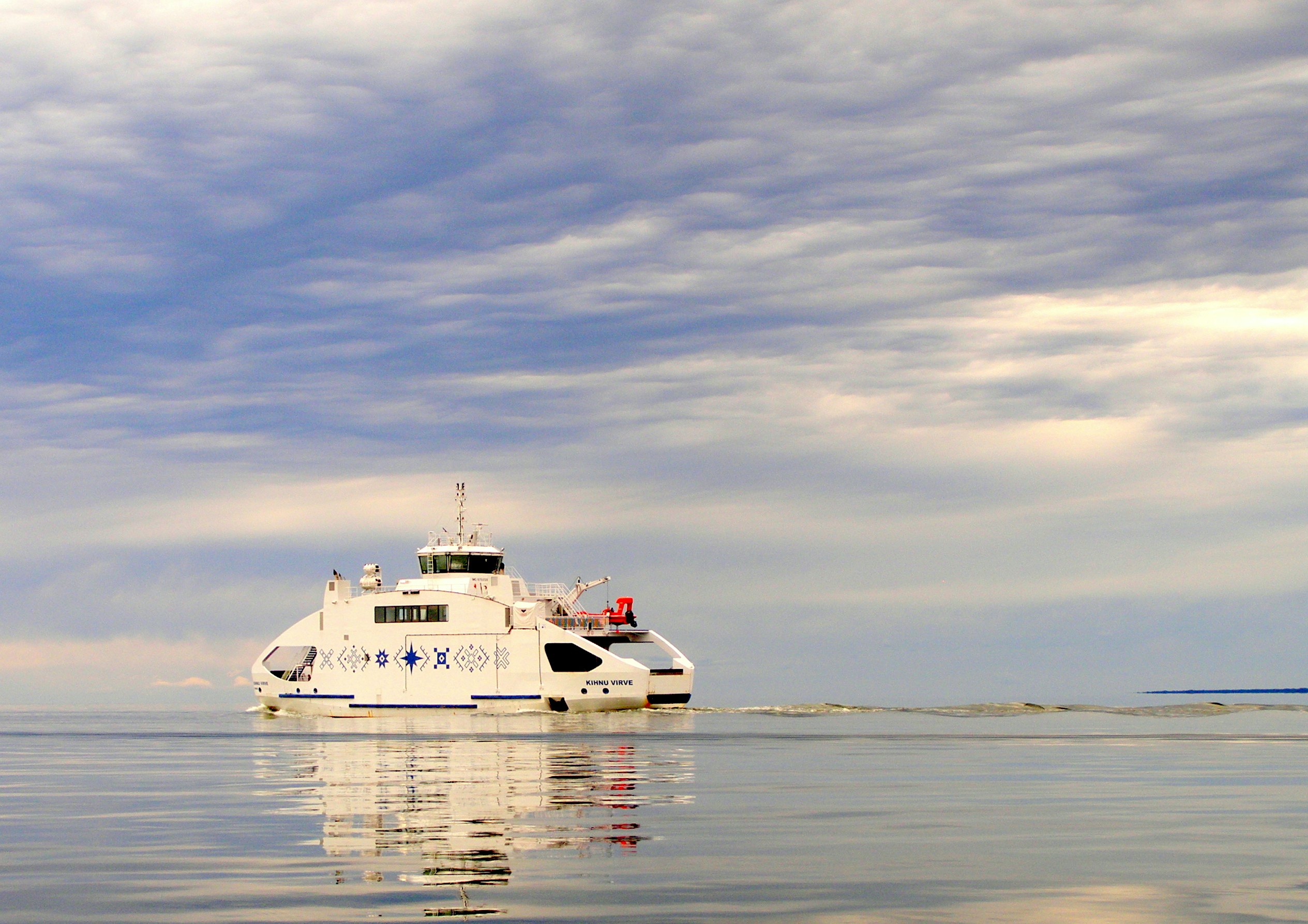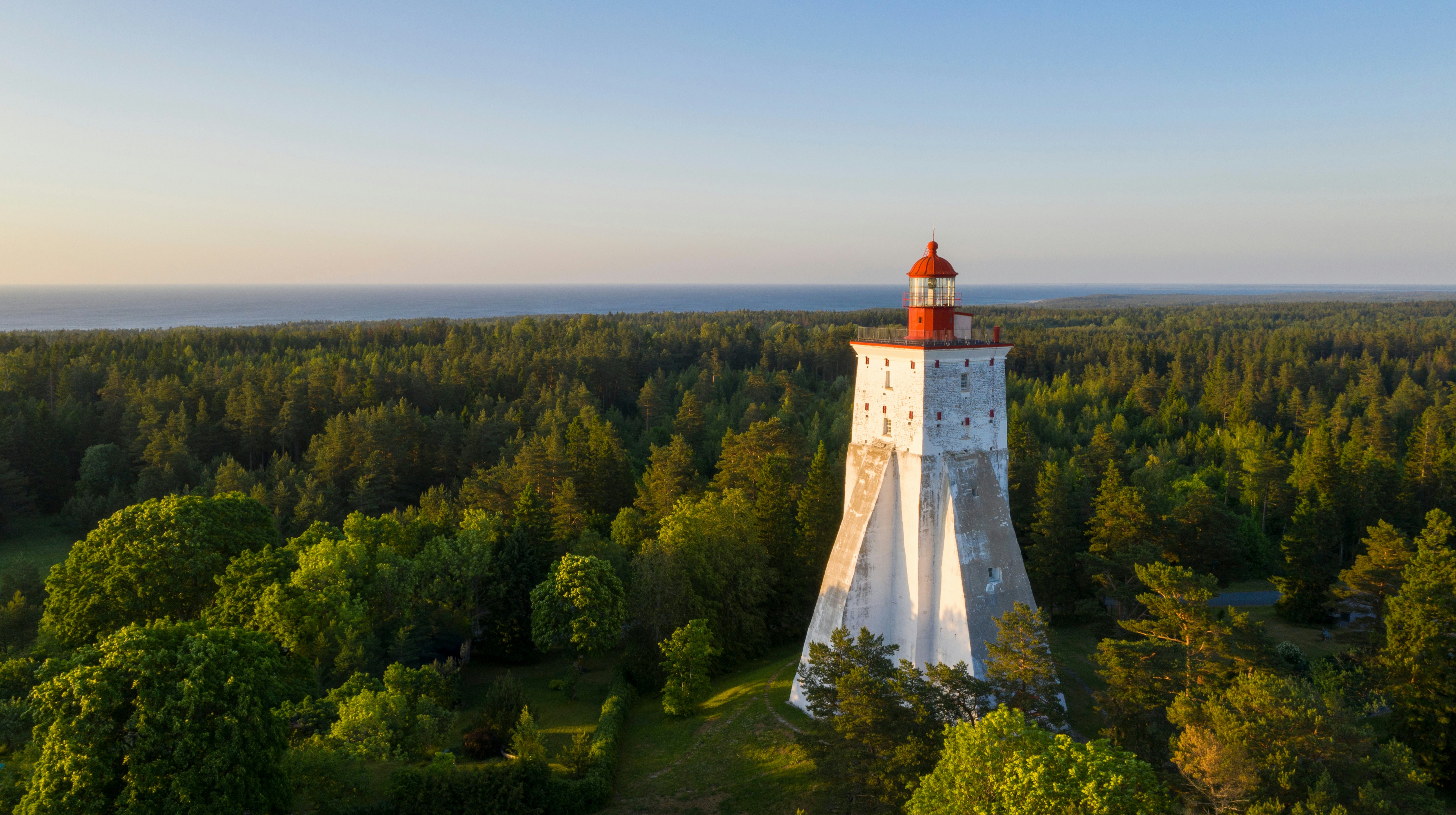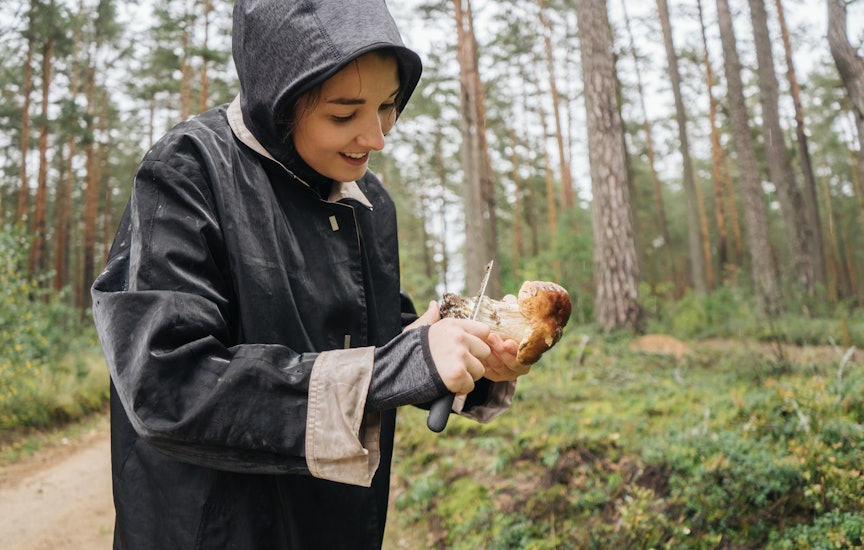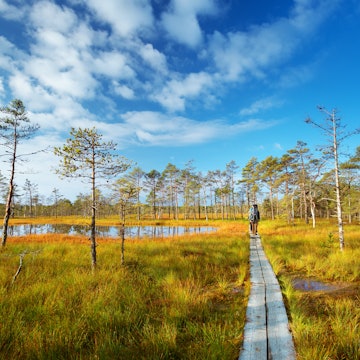

Angla Windmill Hill on Saaremaa Island in Estonia. A. Aleksandravicius/Shutterstock
Estonia may be a small country, but it is home to an incredible 2317 islands. Most are tiny patches of land and rock, washed by the waves of the Baltic Sea and inhabited only by seals and birds. The larger islands offer a captivating blend of tranquility, historic lighthouses, desolate landscapes dotted with juniper and sea buckthorn bushes, wooden windmills, ancient limestone outcrops, peaceful farmsteads and villages, and living traditional culture. Thanks to the short distances, it's easy to hop between several islands to discover the individual character of each, or enjoy a longer stay soaking in the atmosphere of just one.
If you want to plan an off-the-beaten-path island-hopping adventure, here’s how to explore Estonia’s islands.


Which of Estonia’s islands should I visit?
Each of Estonia’s islands has its unique rhythm; some are quiet and meditative, while others are shaped by centuries of tradition and history. A few islands are easily accessible as a day trip from the capital city Tallinn, such as Naissaar, Aegna, and Prangli, offering a quick escape into island life even for the busiest travelers. For a proper island-hopping trip and deeper dive into Estonia's island culture, head to the West Estonian archipelago and visit Saaremaa, Muhu, Hiiumaa, and Vormsi, or venture south to Kihnu and Ruhnu in the Gulf of Riga.
Saaremaa, Estonia's largest island, is perfect for a multi-day getaway. Wander around the charming town of Kuressaare, with its cobbled streets and red-roofed houses, and visit the Kaali meteorite craters and Panga Cliff. Enjoy the iconic wooden windmills, scattered across the landscape as quiet reminders of the island's agricultural past. Saaremaa is also known for its historic spa culture – the first mud spa opened here in 1824, and today’s wellness seekers can still choose from several spa hotels.
Neighboring Muhu is often rushed through, but it’s worth taking a moment to linger. Known as the island "where time rests," it offers serene countryside, horseback riding, artisanal handcrafts and the first Michelin-listed restaurant on Estonia's islands – Restaurant Alexander at Pädaste Manor.
Hiiumaa is ideal for nature lovers craving solitude. It's an island where untouched landscapes – giant boulders hidden in forests, winding rivers, migrating birds, wild orchids and deserted beaches – create a sense of tranquility that's hard to find elsewhere. Go hiking, watch seals or simply spend a quiet day by the sea.
Vormsi, once a Swedish settlement, retains its heritage with more than 330 sun crosses at the cemetery and a fascinating Vormsi Farm Museum. This calm island is best explored by bike or on foot.
Kihnu is often associated with local women in colorful traditional costumes riding motorcycles. And to some extent, it's true. The island has a strong female community that has preserved its cultural heritage for generations while the men were out at sea. To experience the distinctiveness of Kihnu's traditions, consider joining a guided tour with a local or time your visit to coincide with one of the island's cultural events.
Ruhnu, with just one settlement, is an ideal escape for those seeking wilderness. Hidden in the forest is one of Estonia's oldest wooden buildings – St Madeline's Church, built in 1644. Like Vormsi, Ruhnu was home to Swedish seafarers for centuries.

How do I travel around Estonia's islands?
Getting to the largest and most popular of Estonia’s islands is easier than you might expect. Small car ferries operate frequently – for example, a thirty-minute ride from Virtsu port on the mainland to Kuivastu port on Muhu runs once or twice per hour daily. Muhu is then connected to Saaremaa by a causeway. Frequent ferries also depart from Rohuküla port on the mainland to Heltermaa on Hiiumaa and Sviby on Vormsi. The ferry from Munalaid port connects the mainland with Kihnu several times a day.
Inter-island ferries operating two to three times per day make island-hopping easy – a one-hour ride connects Triigi on Saaremaa with Sõru on Hiiumaa, perfect for combining visits to the two biggest islands.
Getting to Ruhnu, however, is a bit trickier. In the summer season, passenger ferries depart from Roomassaare on Saaremaa, as well as from Munalaid and Pärnu on the mainland, but only on specific days and never on the same day. Spending at least one night on Ruhnu is unavoidable unless you hire a private boat or yacht, which is also an option when island-hopping in Estonia. During the winter season, a small plane operates several times a week between Pärnu, Ruhnu and Saaremaa.
Ferry routes are most frequent from May to September, and some don't run outside the summer season. It's strongly advised to book tickets in advance – unless you want to risk getting stuck on an island longer than planned.
If you're traveling without a car, comfortable buses run several times daily from Tallinn to Kuressaare on Saaremaa and Kärdla on Hiiumaa, bringing you from the capital to the islands in about four hours. The fastest way to reach the islands is by plane. Flights from Tallinn to either Kuressaare or Kärdla take just 30 to 40 minutes.
In winter, if the ice is thick enough, official ice roads open – a genuinely one-of-a-kind experience. The longest one stretches 25 km (15.5 miles) across the frozen Baltic Sea from the mainland to Hiiumaa, offering an unforgettable ride through absolute whiteness.

Getting from the mainland to Saaremaa:
By ferry: from Virtsu to Kuivastu (30 min ride; 1 to 2 times per hour)
By bus: from Tallinn to Kuressaare (4 hour ride; 5 times per day)
By plane: from Tallinn to Kuressaare (40 min flight; 1 to 2 times per day)
Getting from the mainland to Hiiumaa:
By ferry: from Rohuküla to Heltermaa (75 min ride; runs once every 90 minutes)
By bus: from Tallinn to Kärdla (4 hour ride; 2 times per day)
By plane: from Tallinn to Kärdla (30 min flight; 1 to 2 times per day)
Getting from the mainland to Vormsi:
By ferry: from Rohuküla to Sviby (45 min ride; 3 to 5 times per day)
Getting from the mainland to Kihnu:
By ferry: from Munalaid to Kihnu (1 hour ride; 3 to 4 times per day)
Getting from the mainland to Ruhnu:
By ferry: (summer season): from Munalaid to Ruhnu (2¾ hour ride; 2 times per week)
By ferry: (summer season): from Pärnu to Ruhnu (3 hours and 10 min ride; 3 times per week)
By plane: (winter season): from Pärnu to Ruhnu (35 min flight; 4 times per week)
Getting from Saaremaa to Hiiumaa:
By ferry: from Triigi to Sõru (1 hour ride; 2 to 3 times per day)
Getting from Saaremaa to Ruhnu:
By ferry: (summer season): from Roomassaare to Ruhnu (2 hour 10 min ride; 2 times per week)
By plane: (winter season): from Kuressaare to Ruhnu (25 min flight; 3 times per week)
How do I get around Estonia's islands?
Getting around Estonia's islands is best done by bicycle – an eco-friendly choice that suits the islands' atmosphere. Bring your bike or rent one locally. Light traffic, peaceful surroundings, and stretches of the EuroVelo 13 Iron Curtain Trail and EuroVelo 10 Baltic Sea Cycle Route make cycling a scenic and safe way to explore rural landscapes, windswept coastlines, and villages at your own pace. On larger islands, car rentals are available, with gas stations and even electric car charging points. For something extraordinary, consider renting a retro bus or an off-road truck.
When is the best time to go to Estonia's islands?
The best time to visit Estonia's islands is from May to September, when daylight is abundant, and temperatures range from 15°C (59°F) to 25°C (77°F), nature is in full bloom and ferry connections are frequent. July and August are the warmest and busiest months, ideal for cycling, swimming and enjoying local festivals. Many accommodations and attractions operate seasonally, so summer ensures the fullest experience. September tends to have a quieter, slightly melancholic mood with fewer tourists and colorful fall landscapes. Winter visits are possible, especially to experience ice roads, but services are limited, and the weather can be harsh.

What are the best things to do on Estonia's islands?
A typical landmark for any place by the sea is a lighthouse, and Estonia's islands are no exception. It's a fun thing to do – go and hunt the most beautiful or weirdest lighthouses. Several of them even offer to go up the stairs and have a wonderful panorama of the surroundings. Kõpu lighthouse on Hiiumaa is one of the oldest still-operating lighthouses in the world. Kihnu lighthouse was brought to Estonia from England. Tahnkuna lighthouse was transported to Hiiumaa from Paris. Kiipsaare lighthouse offers a bizarre view, standing right in the sea. Sõrve lighthouse is a must-visit in Saaremaa.
One of the best ways to truly experience the islands is to meet the locals. Hiiu Gourmet, a family-run herbal tea factory, invites travelers to learn about wild herbs, make tea blends, or hike across meadows to forage for edible plants. It's also a cozy spot for coffee and local souvenirs. Kadakakoda offers tastings of syrup and products made from juniper, the region's signature plant.
Estonia's islands are perfect for slowing down and relaxing. On Saaremaa, famous for its wooden windmills, nothing beats the experience of staying overnight in one of them, like Ohessaare Windmill, which offers sea views and a charming summer café. On Muhu, Tõnise Talu, a 200-year-old farmstead, invites guests to experience rural life with a local family, historic vibes, and a cozy sauna. You might even meet their friendly sheep! And for the ultimate relaxation, don't miss the opportunity to indulge in at least one of the famous Saaremaa spas. Surrounded by juniper bushes, Sörwespa promises an authentic island experience.















